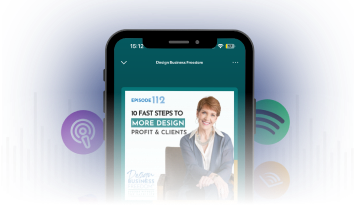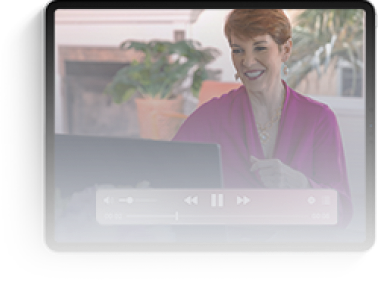15 Reasons You Aren’t Getting Hired as a Designer
Landing clients in the competitive world of interior design can be challenging, and sometimes, despite your best efforts, you may find yourself struggling to close deals. If you’ve been sending proposals without much success, it’s essential to take a step back and assess what might be holding you back.
Let’s explore 15 reasons you aren’t getting hired as a designer and what you can do to improve your chances of winning those coveted projects. Understanding these reasons designers don’t get hired can help you identify areas for improvement.
1. Your Appearance May Be Intimidating
It might sound strange, but being an attractive male or female can sometimes work against you. If a potential client’s spouse or partner feels insecure or threatened by your presence, this could hinder your chances of getting hired. While there’s little you can do about this, understanding that it’s a possibility might help you navigate such situations with extra care. This is one of the more surprising reasons designers don’t get hired.
2. Lack of a Clear Process
Clients need to understand how you work. If your process is unclear or, worse, if you don’t have one, potential clients might feel uneasy about moving forward. It’s crucial to articulate your process clearly and ensure it resonates with the client. Remember, clients aren’t necessarily looking for a list of services—they want to know how you’ll solve their problems. A lack of clarity in your process is a common reason designers don’t get hired.
3. Weak Know, Like, and Trust (KLT) Factor
Clients hire people they know, like, and trust. If you haven’t taken the time to build these factors, you may struggle to close deals. Avoid rushing through the design discovery process just to get a signed agreement. Instead, focus on building genuine relationships. A weak KLT factor is another significant reason designers don’t get hired.

4. Low Likeability Factor
Even if clients know and trust you, they might not hire you if your likeability factor isn’t high enough. This doesn’t mean changing who you are, but rather, it’s about being genuinely interested in your clients. Showing curiosity about their lives and interests can significantly boost your likeability. Low likeability is one of the subtle reasons designers don’t get hired.
5. Clients Don’t Know You Beyond Your Work
If you’re not sharing enough about who you are as a person—your hobbies, family life, and interests—clients may find it hard to connect with you. Interior design is an intimate business, and clients need to feel comfortable and confident in you. So, let them get to know you beyond your professional persona. Failing to connect on a personal level is another reason designers don’t get hired.
6. Skipping Steps in Your Discovery Process
Cutting corners in your discovery process can cost you a client. Every step, from taking “before” photos to fully explaining your process, is vital. Clients may not have the same visual or conceptual capacity as you, and missing these steps can lead to confusion and lost opportunities.
7. Lack of Transparency
Clients today expect transparency, especially in pricing. Using vague terms like “reasonable retail” can erode trust. Be clear about your fees and the value you bring. The top designers are often the most transparent, which helps build credibility and trust with clients.
8. Unwillingness to Provide Specific Pricing
While you shouldn’t let clients dictate how you run your business, refusing to provide specific pricing might turn them away. It’s essential to balance transparency with maintaining control over your business processes.
9. Clients Don’t Understand the Value of Design
If clients don’t see the value in what you offer, it’s your job to educate them. This is particularly important if they’ve never worked with a designer before or if their expectations are shaped by unrealistic TV portrayals.
10. Allowing Unrealistic Expectations
Unrealistic expectations can derail a project before it even starts. It’s your responsibility to educate clients on the realities of design, including the long-term return on investment and the challenges that may arise. Setting the right expectations from the outset can prevent future disappointments.
11. Attention to Detail Issues
Details matter, especially in client communication. Typos, misspellings, and poor grammar in your marketing materials or agreements can make clients question your attention to detail in design. Make sure every piece of communication reflects your professionalism.
12. Rushing the Courtship
Building relationships with affluent clients takes time. If you rush through the proposal process without establishing a strong connection, you might lose the client. Focus on making the proposal process feel like an exciting, well-considered courtship.
13. Failing to Make the Process Exciting
Design is about creating a vision and taking clients on a journey. If you focus too much on the numbers and not enough on the excitement of the project, you’re missing an opportunity to engage your clients on an emotional level.
14. Sending Agreements via Email Without Walkthroughs
Don’t just email your agreements and hope for the best. Walk clients through the agreement, either in person or via Zoom, to address any questions or concerns in real-time. This approach shows professionalism and can significantly increase the likelihood of getting the agreement signed.
15. Not Using Digital Tools Effectively
In today’s fast-paced world, making clients print, sign, and scan agreements can be a deal-breaker. Use digital tools like DocuSign to make the process seamless and easy. Reducing friction in the signing process can help you close deals more efficiently.
Key Takeaway
Improving your chances of getting hired involves a combination of clear communication, relationship-building, transparency, and professionalism. By addressing these 15 reasons designers don’t get hired, you can enhance your client interactions and increase your success rate in landing projects.
If you’re ready to increase your interior design practice profits, work exclusively with ideal clients, and enjoy the time and resources for your extraordinary life, explore your coaching options. We’ve got your back in the business of interior design.





